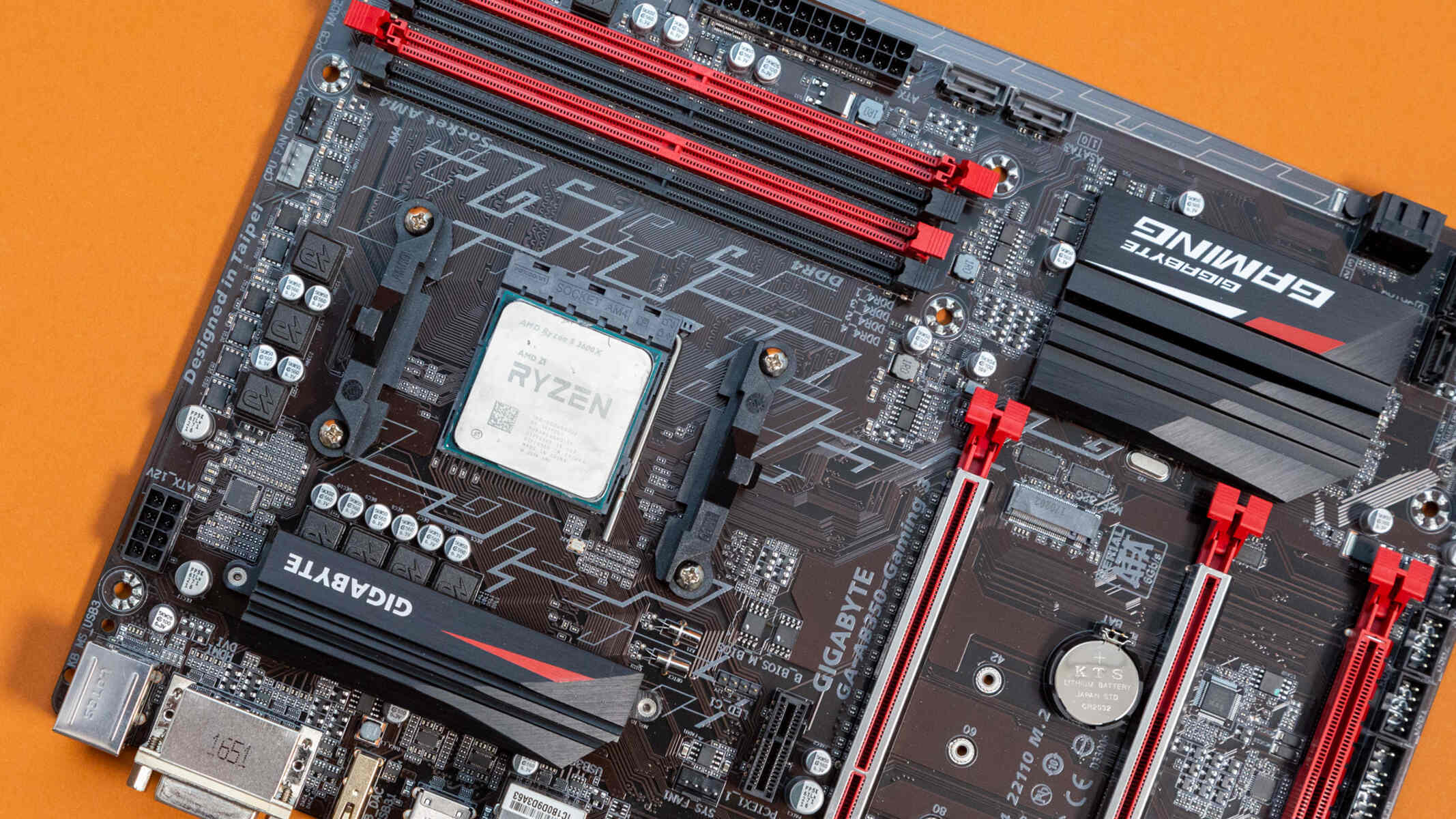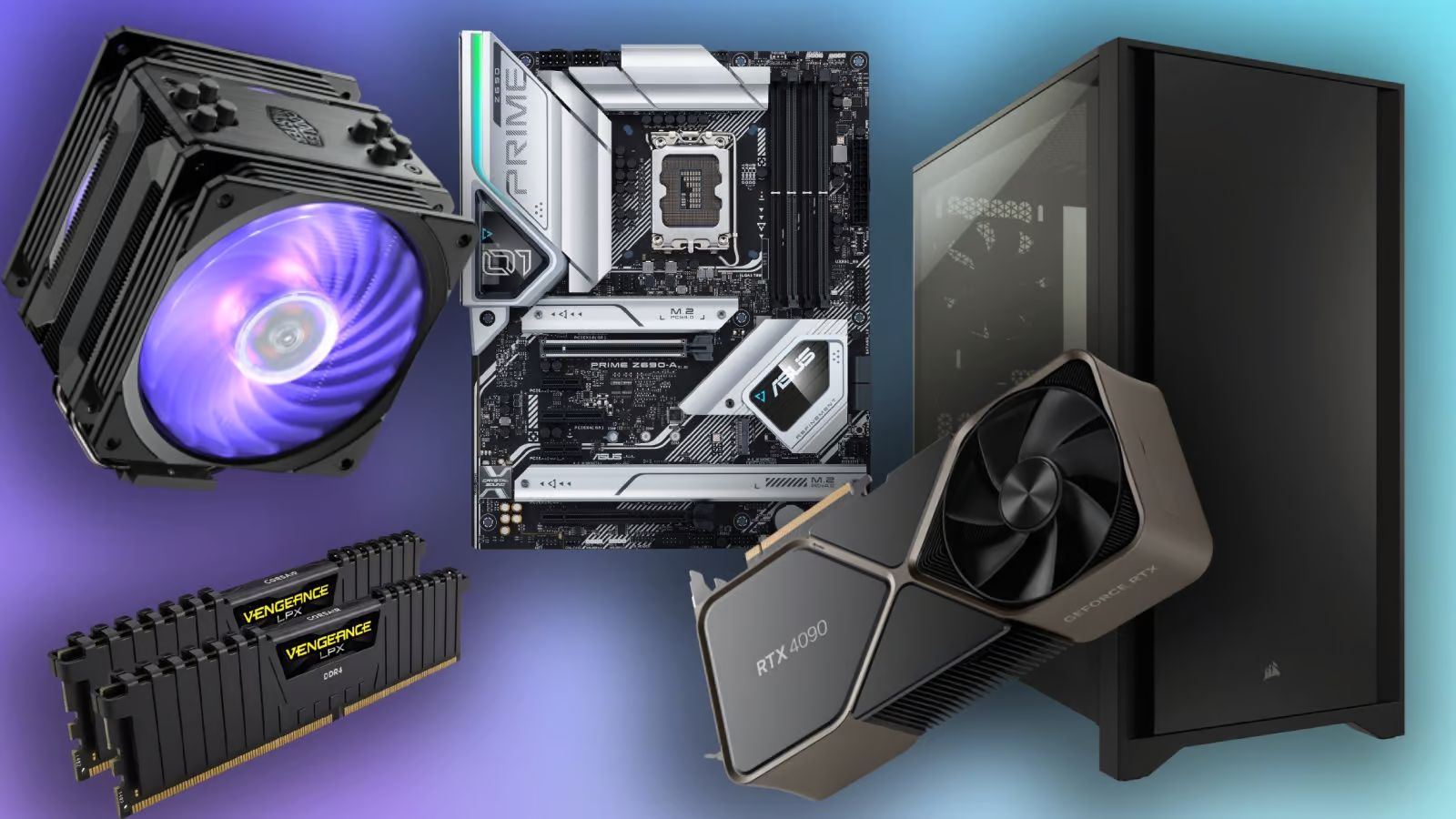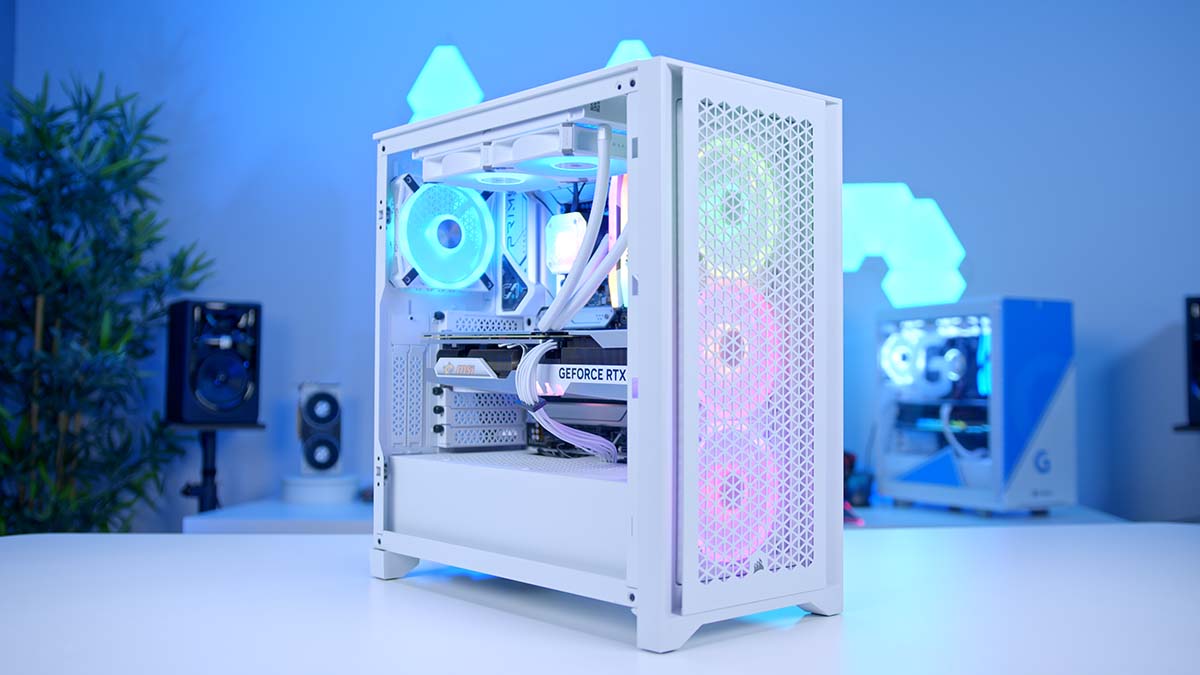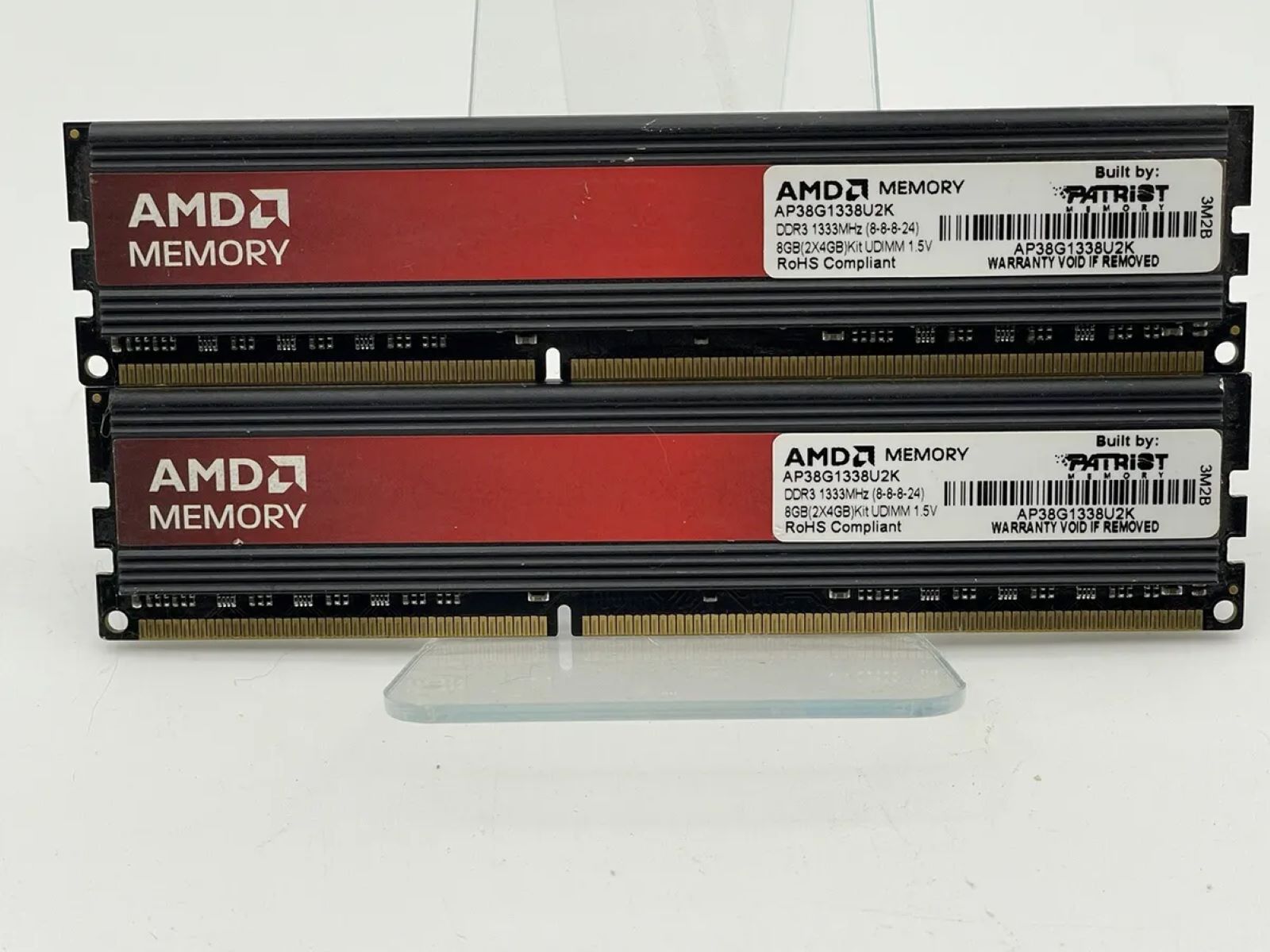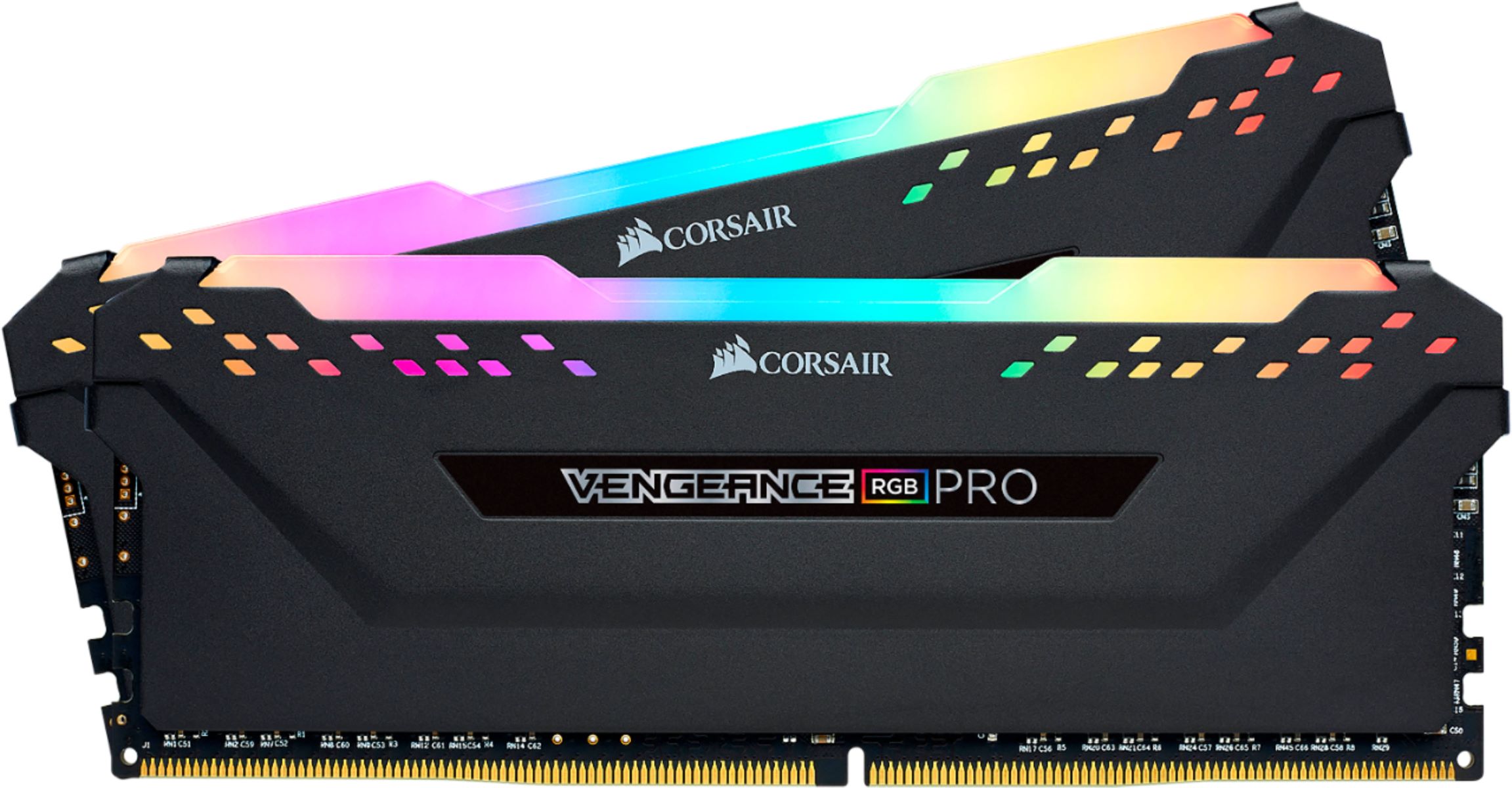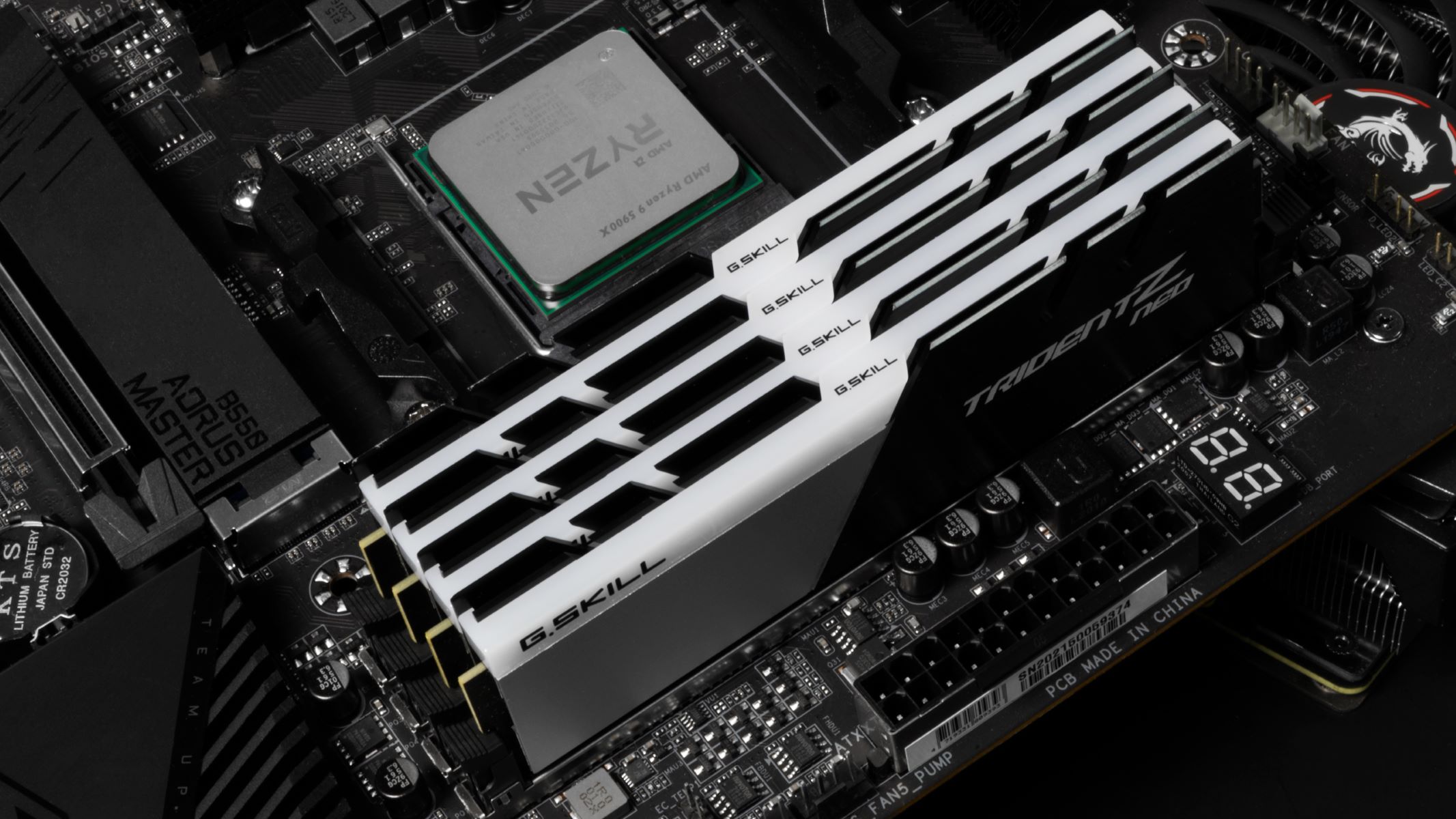Introduction
The Ryzen 5 3600 is a popular processor from AMD’s Ryzen lineup, known for its impressive performance and affordability. As a CPU that caters to gamers, content creators, and multitaskers, it is essential to choose the right RAM to complement its capabilities.
RAM, or Random Access Memory, plays a crucial role in the overall performance of a computer system. It serves as temporary storage for data that the CPU needs to access quickly. The choice of RAM can have a significant impact on the speed and efficiency with which the Ryzen 5 3600 operates, making it vital to understand the RAM specifications that this processor supports.
In this article, we will explore the RAM specifications for the Ryzen 5 3600, including its supported generation and speed, dual-channel configuration, maximum supported capacity, compatibility with different RAM module types, overclocking potential, and the importance of CAS latency and timing. Armed with this knowledge, you will be better equipped to select the right RAM for your Ryzen 5 3600 system.
Let’s dive in and discover the optimal RAM configurations that can help you make the most of your Ryzen 5 3600 processor.
RAM Specifications for Ryzen 5 3600
When it comes to the RAM specifications for the Ryzen 5 3600, there are a few key factors to consider. These include the supported generation and speed, dual-channel configuration, maximum supported capacity, compatibility with different RAM module types, overclocking potential, and the importance of CAS latency and timing.
The Ryzen 5 3600 supports DDR4 RAM, which is the current standard for modern computer systems. It is important to note that it does not support older DDR3 or DDR2 RAM modules. DDR4 RAM offers higher speeds and improved energy efficiency, making it an ideal choice for maximizing the performance of the Ryzen 5 3600.
In terms of generation and speed support, the Ryzen 5 3600 is compatible with both first and second-generation DDR4 RAM. This means that you have the flexibility to choose RAM modules from a wide range of options. However, it is recommended to opt for second-generation DDR4 RAM, as it offers improved performance and better compatibility with the Ryzen architecture.
The Ryzen 5 3600 also supports various RAM speeds, including DDR4-3200, DDR4-3000, and DDR4-2933. These speeds provide a balance between performance and cost-effectiveness. It is worth noting that the Ryzen 5 3600 benefits from higher RAM speeds, so investing in faster RAM modules can lead to improved system performance, especially in tasks that are memory-intensive.
Another important aspect to consider is the dual-channel configuration. The Ryzen 5 3600 supports dual-channel memory, which means that it is recommended to install RAM modules in pairs to take advantage of increased bandwidth and improved data transfer speeds. Therefore, it is advisable to purchase RAM kits that come with two identical modules to ensure optimal performance.
Regarding the maximum supported RAM capacity, the Ryzen 5 3600 can handle up to 128GB of RAM, making it suitable for demanding tasks such as video editing, 3D rendering, and virtualization. However, for most gaming and general computing purposes, 16GB or 32GB of RAM should be sufficient.
In the next section, we will delve deeper into the compatibility of different RAM module types with the Ryzen 5 3600 and explore the overclocking potential of this processor.
Generation and Speed Support
The Ryzen 5 3600 supports both first and second-generation DDR4 RAM, offering users a wide range of options when it comes to choosing compatible memory modules. However, it is important to note that the second-generation DDR4 RAM is generally recommended for optimal performance and compatibility with the Ryzen architecture.
First-generation DDR4 RAM typically operates at speeds of 2133MHz to 2666MHz. While it is compatible with the Ryzen 5 3600, it is worth considering higher-speed options to take full advantage of the processor’s capabilities. The second-generation DDR4 RAM, on the other hand, features improved timings and higher frequency support, offering better performance overall.
When it comes to speed support, the Ryzen 5 3600 is compatible with various RAM speeds, including DDR4-3200, DDR4-3000, and DDR4-2933. These speeds provide a balance between performance and cost-effectiveness, making them popular choices among users building Ryzen 5 3600 systems.
It is important to note that the Ryzen 5 3600 benefits from higher RAM speeds, especially in memory-intensive tasks such as content creation, video editing, and gaming. The faster RAM speeds allow for enhanced data transfer rates and improved system responsiveness. Therefore, investing in RAM modules with higher speeds, such as DDR4-3200 or DDR4-3600, can result in tangible performance gains.
However, it is essential to keep in mind that achieving higher RAM speeds may require manual tweaking of the system’s BIOS settings. Enabling the XMP (Extreme Memory Profile) or DOCP (Direct Overclock Profile) in the BIOS can help automatically configure the RAM to its specified speed and timings, maximizing its performance without manual adjustments.
In summary, the Ryzen 5 3600 supports both first and second-generation DDR4 RAM, but second-generation RAM with higher speeds is recommended for better compatibility and performance. Choosing RAM modules with speeds of DDR4-3200 or higher can provide noticeable improvements in system responsiveness and overall performance, especially in memory-intensive tasks.
Dual Channel Configuration
The Ryzen 5 3600, like most modern processors, supports a dual-channel memory configuration. This means that it is designed to work most efficiently when memory modules are installed in pairs, allowing for increased bandwidth and improved data transfer speeds.
When using a dual-channel configuration, the memory controller on the Ryzen 5 3600 can simultaneously access two memory modules at once, effectively doubling the available memory bandwidth. This results in faster data transfer rates and improved system performance, especially in tasks that rely heavily on memory, such as gaming, content creation, and multitasking.
To take advantage of the dual-channel configuration, it is recommended to install RAM modules in matching pairs. This means using two identical memory modules with the same capacity, speed, and timings. This ensures that the system can achieve optimal synchronization between the memory modules, maximizing performance and stability.
It is worth noting that using mismatched memory modules in a dual-channel configuration can lead to suboptimal performance. In such cases, the system may operate in an asymmetrical configuration, where one module runs at the speed of the lower-rated module, reducing the overall memory bandwidth.
When purchasing RAM for the Ryzen 5 3600, it is advisable to choose RAM kits that come with two identical modules. These kits are specifically designed for dual-channel operation and have been tested for compatibility and reliability. Installing a RAM kit ensures that the modules are well-matched and can provide the best possible performance for your Ryzen 5 3600 system.
Overall, the dual-channel memory configuration is a crucial aspect to consider when selecting RAM for the Ryzen 5 3600. By installing memory modules in matching pairs, you can harness the full potential of the processor’s dual-channel memory controller, enhancing system performance and ensuring smooth and efficient multitasking.
Maximum Supported RAM Capacity
The Ryzen 5 3600 offers an impressive maximum supported RAM capacity, making it suitable for a wide range of computing needs. This processor can handle up to 128GB of RAM, providing ample room for demanding tasks such as video editing, 3D rendering, and virtualization.
While the maximum supported RAM capacity is substantial, it is essential to consider your specific requirements before deciding on the amount of RAM for your Ryzen 5 3600 system. For most gaming and general computing purposes, 16GB or 32GB of RAM is more than sufficient, offering a good balance between performance and cost.
However, if you engage in memory-intensive tasks or run applications that demand a significant amount of RAM, opting for higher capacities can provide a noticeable performance boost. Activities such as professional video editing, running virtual machines, or working with large datasets may benefit from having 64GB or even 128GB of RAM.
It is important to note that the RAM capacity is also influenced by the number of available memory slots on the motherboard. The Ryzen 5 3600 is compatible with motherboards that generally have four memory slots, allowing for flexible RAM configurations.
When considering the RAM capacity, it is advisable to check the motherboard’s specifications and the processor’s memory support to ensure compatibility. Some motherboards may have certain limitations on the maximum RAM capacity, so it is crucial to verify that the chosen motherboard can handle the desired amount of RAM.
Additionally, it is worth noting that the Ryzen 5 3600 operates in dual-channel mode when two memory modules are installed. This means that installing two modules of the same capacity can provide better performance compared to a single module with double the capacity. For example, using two 8GB modules (totaling 16GB) in a dual-channel configuration can yield better performance than using a single 16GB module.
In summary, the Ryzen 5 3600 supports up to 128GB of RAM, offering a high maximum supported capacity for a variety of computing needs. While 16GB or 32GB is suitable for most users, those engaged in memory-intensive tasks may benefit from larger capacities. Checking the motherboard’s specifications and using a balanced dual-channel configuration can ensure optimal performance and compatibility with the Ryzen 5 3600.
Compatibility with Different RAM Module Types
When choosing RAM for the Ryzen 5 3600, it is important to consider the compatibility with different RAM module types. The Ryzen 5 3600 exclusively supports DDR4 RAM modules, meaning that it is not compatible with older DDR3 or DDR2 modules.
DDR4 RAM has become the standard for modern computer systems due to its enhanced performance and energy efficiency. It offers higher speeds and larger capacities compared to its predecessors, making it an ideal choice for maximizing the potential of the Ryzen 5 3600.
It is crucial to ensure that the DDR4 RAM modules you select are compatible with the Ryzen 5 3600. Most DDR4 RAM modules in the market are designed to be compatible with AMD platforms, ensuring smooth operation and optimal performance. However, it is always advisable to check the motherboard’s specifications and the RAM manufacturer’s compatibility list to guarantee compatibility.
There are various DDR4 RAM module types, such as DIMM (Dual In-Line Memory Module), SO-DIMM (Small Outline DIMM), and UDIMM (Unbuffered DIMM). The Ryzen 5 3600 supports the UDIMM type, which is the most common and widely available form factor for desktop systems.
It is worth noting that the Ryzen 5 3600 is not compatible with ECC (Error Correcting Code) RAM modules. ECC RAM is primarily used in servers and workstations, offering additional error detection and correction capabilities. While ECC RAM may provide enhanced reliability, it is not necessary or supported by the Ryzen 5 3600.
When selecting DDR4 RAM modules for the Ryzen 5 3600, it is recommended to choose modules with the same specifications, such as capacity, speed, and timings. This ensures optimal performance and compatibility within the dual-channel configuration.
In summary, the Ryzen 5 3600 exclusively supports DDR4 RAM modules and is not compatible with older DDR3 or DDR2 modules. It is important to choose DDR4 RAM modules that are specifically designed for AMD platforms and ensure compatibility with the Ryzen 5 3600. Opting for UDIMM modules, avoiding ECC RAM, and selecting modules with matching specifications can help maximize performance and compatibility with the Ryzen 5 3600.
Overclocking Potential
The Ryzen 5 3600 offers an excellent potential for overclocking, allowing users to push the processor beyond its stock frequencies for even better performance. Overclocking involves increasing the clock speed of the CPU and, in some cases, the RAM, to achieve higher processing speeds and improved system responsiveness.
When it comes to overclocking the Ryzen 5 3600, it is essential to have a compatible motherboard that supports overclocking features. Most modern motherboards designed for AMD processors offer robust overclocking capabilities, including options to adjust voltages, clock speeds, and memory timings.
When overclocking the Ryzen 5 3600, it is generally recommended to focus on increasing the CPU clock speed rather than the RAM frequency. The processor’s performance gains from higher CPU clock speeds are more substantial compared to increases in RAM frequency.
It is important to approach overclocking with caution and ensure proper cooling for the CPU. Higher clock speeds can generate more heat, potentially leading to thermal throttling and instability if not adequately managed. Investing in an aftermarket CPU cooler or ensuring good airflow within the system can help maintain optimal temperatures during overclocking.
Overclocking the Ryzen 5 3600 CPU can be approached through manual overclocking or utilizing precision boost features such as Precision Boost Overdrive (PBO). Manual overclocking involves manually adjusting the CPU multiplier and voltage settings in the BIOS to achieve higher clock speeds. PBO, on the other hand, is an automatic overclocking feature that allows the CPU to push its performance within defined thermal and power limits.
When it comes to RAM overclocking, the Ryzen 5 3600 is known to benefit from higher RAM speeds. As mentioned earlier, faster RAM speeds can result in a tangible performance boost, especially in memory-intensive tasks. However, achieving higher RAM speeds may require manual adjustments in the BIOS and enabling the XMP or DOCP profiles to automatically configure the RAM to its specified speed and timings.
It is worth noting that overclocking is an advanced technique that requires knowledge and careful testing to ensure stability. Overclocking can void warranties and potentially damage components if not done properly. It is recommended to refer to reliable overclocking guides and forums for guidance to ensure a safe and successful overclocking experience.
In summary, the Ryzen 5 3600 offers excellent potential for overclocking, providing users with the opportunity to enhance performance beyond the stock frequencies. With a compatible motherboard and proper cooling, users can achieve higher CPU clock speeds and potentially increase RAM frequencies for improved system responsiveness and enhanced performance in memory-intensive tasks.
CAS Latency and Timing
When selecting RAM for the Ryzen 5 3600, understanding the concept of CAS latency and timing is crucial. CAS (Column Address Strobe) latency refers to the delay between the memory controller requesting data from memory and the actual retrieval of that data. It is measured in clock cycles and directly impacts the RAM’s overall performance.
A lower CAS latency is generally preferred, as it indicates that the RAM can access data more quickly, resulting in improved system responsiveness. However, it is important to note that CAS latency is just one aspect of RAM timing. Other factors, such as tRCD (Row Address to Column Address Delay) and tRP (Row Precharge Time), also contribute to the overall performance of the memory module.
When it comes to the Ryzen 5 3600, a CAS latency of 16 is considered a good balance between performance and cost. RAM modules with CAS latency of 16 are widely available and provide a noticeable improvement over higher latency modules.
However, it is worth noting that the Ryzen architecture is known to benefit from faster RAM speeds rather than excessively tight timings. In some cases, opting for RAM modules with a slightly higher CAS latency but higher clock speeds can provide better overall performance.
For example, a DDR4 RAM module with a CAS latency of 18 running at 3600MHz might outperform a module with a CAS latency of 16 running at 3200MHz, due to the faster clock speed compensating for the slightly higher latency. Therefore, it is important to consider both CAS latency and clock speed when choosing RAM for the Ryzen 5 3600.
It is also worth noting that the Ryzen 5 3600 supports XMP (Extreme Memory Profile) and DOCP (Direct Overclock Profile), which are profiles for automatic RAM configuration in the BIOS. These profiles allow the system to automatically adjust the RAM timings and clock speeds to their optimized settings, maximizing performance without the need for manual adjustments.
Ultimately, when selecting RAM for the Ryzen 5 3600, it is recommended to prioritize faster clock speeds and a lower CAS latency. Finding a balance between the two will allow you to leverage the full potential of the Ryzen architecture and achieve optimal performance.
In summary, CAS latency and timing are critical factors to consider when choosing RAM for the Ryzen 5 3600. While a lower CAS latency is preferred, it is important to also consider clock speeds and other timing parameters. Finding a balance between CAS latency, clock speed, and RAM module type will ensure optimal performance and compatibility with the Ryzen 5 3600.
Selecting the Right RAM for Ryzen 5 3600
Choosing the right RAM for the Ryzen 5 3600 is crucial to ensure optimal performance and compatibility. Taking into consideration the RAM specifications, generation and speed support, dual-channel configuration, maximum supported capacity, compatibility with different RAM module types, overclocking potential, and CAS latency and timing, will help you make an informed decision.
First and foremost, prioritize DDR4 RAM modules that are specifically designed for AMD platforms and are compatible with the Ryzen 5 3600. Opting for second-generation DDR4 RAM with higher speeds is recommended to take full advantage of the processor’s capabilities.
In terms of speed support, consider DDR4 RAM modules with speeds of at least DDR4-3200 or higher. Faster RAM speeds can lead to improved system responsiveness, especially in memory-intensive tasks.
When it comes to the dual-channel configuration, ensure that you install RAM modules in matching pairs to leverage the increased bandwidth and data transfer speeds. Purchasing RAM kits that come with two identical modules is highly advisable to ensure compatibility and optimal performance.
Consider your specific requirements when deciding on the RAM capacity. For most gaming and general computing needs, 16GB or 32GB of RAM is a suitable choice. However, if you engage in memory-intensive tasks or require higher capacities, opting for 64GB or 128GB of RAM may be beneficial.
Verify the compatibility of different RAM module types with the Ryzen 5 3600. Ensure that you choose DDR4 UDIMM modules, as other types such as DIMM or SO-DIMM are not compatible with this processor.
Explore the overclocking potential of the Ryzen 5 3600 to maximize its performance. Investing in a compatible motherboard with robust overclocking features and proper cooling is essential. Aim to increase the CPU clock speed while also considering RAM frequency to achieve a well-balanced overclocking configuration.
Lastly, consider the CAS latency and timing of the RAM modules. While a lower CAS latency is desirable, it is important to find a balance between latency and clock speed. Opt for modules with a CAS latency of 16 or lower while also ensuring sufficient clock speed for optimal performance.
By considering these factors collectively, you can select the right RAM for your Ryzen 5 3600 system, allowing you to unlock the full potential of this powerful processor and enhance your computing experience.
Conclusion
The Ryzen 5 3600 is a versatile processor that offers impressive performance and affordability. Selecting the right RAM for this CPU is crucial to optimize its capabilities and ensure smooth operation. By considering the RAM specifications, generation and speed support, dual-channel configuration, maximum supported capacity, compatibility with different RAM module types, overclocking potential, and CAS latency and timing, you can make an informed decision when choosing RAM for the Ryzen 5 3600.
DDR4 RAM is the recommended choice for the Ryzen 5 3600, offering higher speeds and improved energy efficiency. It is important to ensure compatibility with the processor, checking the motherboard’s specifications and the RAM manufacturer’s compatibility list. Additionally, prioritize second-generation DDR4 RAM modules with speeds of at least DDR4-3200 or higher to maximize performance.
Installing RAM modules in a dual-channel configuration is essential to take advantage of increased bandwidth and improved data transfer speeds. It is advisable to purchase RAM kits with two identical modules for optimal performance and stability.
Consider your specific requirements when determining the RAM capacity. For most users, 16GB or 32GB of RAM is sufficient, but memory-intensive tasks may benefit from larger capacities, up to 64GB or 128GB.
Verify the compatibility of different RAM module types, ensuring that you choose DDR4 UDIMM modules that are specifically designed for desktop systems.
Exploit the overclocking potential of the Ryzen 5 3600 by investing in a compatible motherboard, enabling you to increase CPU clock speeds and potentially enhance RAM frequencies, resulting in improved overall performance.
Lastly, when considering the CAS latency and timing of the RAM modules, aim for lower CAS latency values while also considering clock speeds for a well-balanced configuration.
By carefully considering these factors, you can select the right RAM for your Ryzen 5 3600 system, ensuring optimal compatibility, performance, and overall user experience. A well-configured RAM setup will unlock the full potential of the Ryzen 5 3600, providing you with a powerful and efficient computing system.







